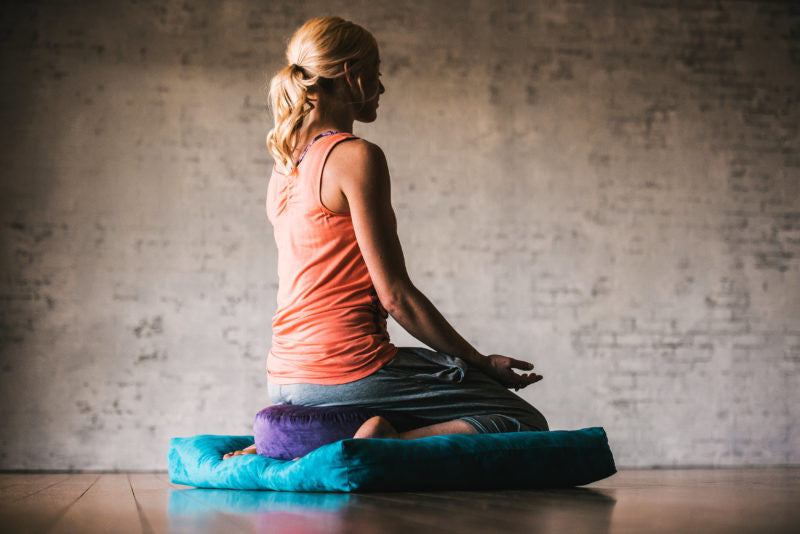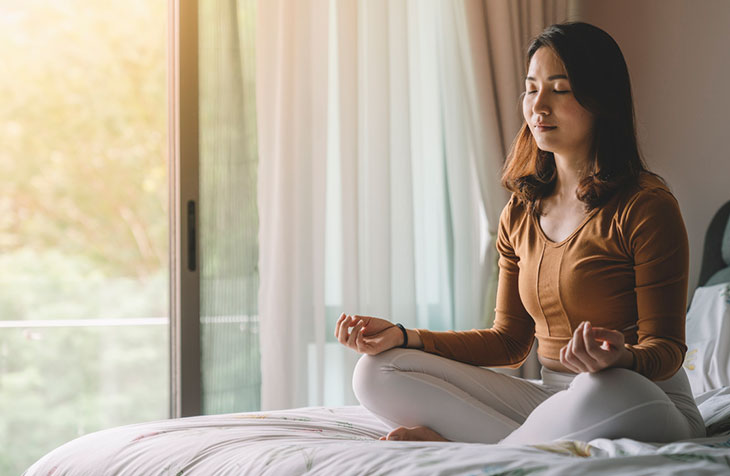Change Your Frame Of Mind with Easy Steps on How to Meditate?
Change Your Frame Of Mind with Easy Steps on How to Meditate?
Blog Article
Just How to Meditate: A Detailed Approach to Getting Mindfulness and Tranquility
Meditation offers as a powerful tool for attaining mindfulness and emotional calm in a fast-paced world. By understanding the fundamental principles and methods included in meditation, individuals can cultivate a practice that improves their general wellness.
Understanding Meditation
Comprehending meditation includes comprehending its essential principles and methods, which work as the structure for the method. At its core, meditation is a psychological workout intended at advertising relaxation, developing interior energy, and creating concern and insight. The practice encourages people to focus their attention, typically through techniques such as deep breathing, visualization, or rule repeating.
Meditation can be classified right into different styles, consisting of mindfulness, transcendental, and loving-kindness reflection, each with unique purposes and techniques. Mindfulness reflection emphasizes present-moment recognition and non-judgmental monitoring of sensations and thoughts, while transcendental reflection includes the use of details rules to transcend ordinary mind. Loving-kindness reflection focuses on developing a mindset of love and empathy towards oneself and others.
Despite the technique used, the primary objective remains regular: to grow a much deeper understanding of the mind and its patterns. This self-awareness promotes psychological durability, quality of thought, and a profound sense of calmness (How to meditate?). By understanding these concepts and techniques, individuals lay the foundation for a successful reflection technique that can considerably boost their overall wellness
Getting Ready For Your Technique
Before starting your reflection practice, it is important to produce an atmosphere for focus and leisure. Select a silent space where you are unlikely to be disturbed. This might be an edge of a room, a yard, or any type of location that stimulates a sense of tranquility. Make sure that the area is tidy and complimentary of mess, as a clean environment can assist get rid of the mind.
Consider the lighting, as all-natural light can boost your state of mind and power. Soft, cozy lights is frequently much more soothing than extreme fluorescent lights. In addition, choose a comfortable temperature, ensuring that you are neither too hot nor too cold.
Incorporating aspects that advertise harmony can additionally improve your experience. This could include soft pillows or coverings for convenience, along with relaxing scents from important oils or incense. It can also be beneficial to have actually a timer set for your reflection session to protect against disturbances from clock-watching.
Standard Meditation Methods

Another reliable strategy is body check meditation. This includes emotionally scanning your body from head to toe, discovering any kind of locations of stress or discomfort and knowingly kicking back those muscular tissues. This practice cultivates a deeper connection between your body and mind.

Last but not least, loving-kindness meditation concentrates on growing compassion in the direction of on your own and others. Silently repeat expressions of goodwill, boosting psychological well-being and interconnectedness. Each of these strategies acts as a foundation for your reflection journey, permitting you to discover the approach that reverberates best with your individual method.
Keeping Focus and Mindfulness
Developing a committed reflection room can boost the capacity to keep mindfulness. A silent, minimalist setting lessens disturbances, enabling much deeper immersion in the method. Furthermore, establishing a time frame can assist handle expectations; starting with much shorter sessions might reduce the shift into longer practices.
Using techniques such as body scanning or observing sensations can additionally strengthen mindfulness. These techniques motivate specialists to stay existing and engaged with their physicality, anchoring their attention in the moment. Normal method is vital; the brain builds strength in time, developing a more powerful capacity for focus.
Incorporating Reflection Into Day-to-day Live
Incorporating meditation into every day life can change routine tasks into opportunities for mindfulness and self-reflection. By incorporating mindfulness practices into usual tasks, people can grow a greater feeling of presence and peace in the middle of the busyness of everyday life.
Begin by identifying moments throughout your day where you can practice and stop briefly mindfulness. Also ordinary activities like washing recipes or best site walking can come to be opportunities for meditation by guiding your attention to the feelings of motion and the audios bordering you.
Additionally, reserving committed times for meditation can enhance its technique. Start with short sessions, slowly boosting period as you come to be more comfortable. Use tips or signs-- like a details time of day or a calming sound-- to establish consistency.
Ultimately, the objective is to weave mindfulness into the material of day-to-day live, allowing you to approach each minute with purpose, therefore improving your general sense of well-being and clarity.
Conclusion
In conclusion, efficient meditation needs a quiet setting, a comfortable position, and an emphasis on the breath. Routine reflection, even in quick sessions, fosters a much deeper connection to the existing moment, eventually leading to greater tranquility and mental quality in daily life.
Reflection can be categorized into numerous styles, consisting of mindfulness, transcendental, and loving-kindness reflection, each with distinct functions and methodologies. Mindfulness meditation stresses present-moment awareness and non-judgmental monitoring of ideas and feelings, while copyright includes the use of specific rules to go beyond common idea processes.With your meditation area prepared, it's time to discover different basic reflection strategies that can help cultivate mindfulness and internal tranquility.Consistently maintaining emphasis and mindfulness throughout reflection can be challenging, particularly for those brand-new to the technique.Developing a devoted meditation area can boost the ability to maintain mindfulness.
Report this page